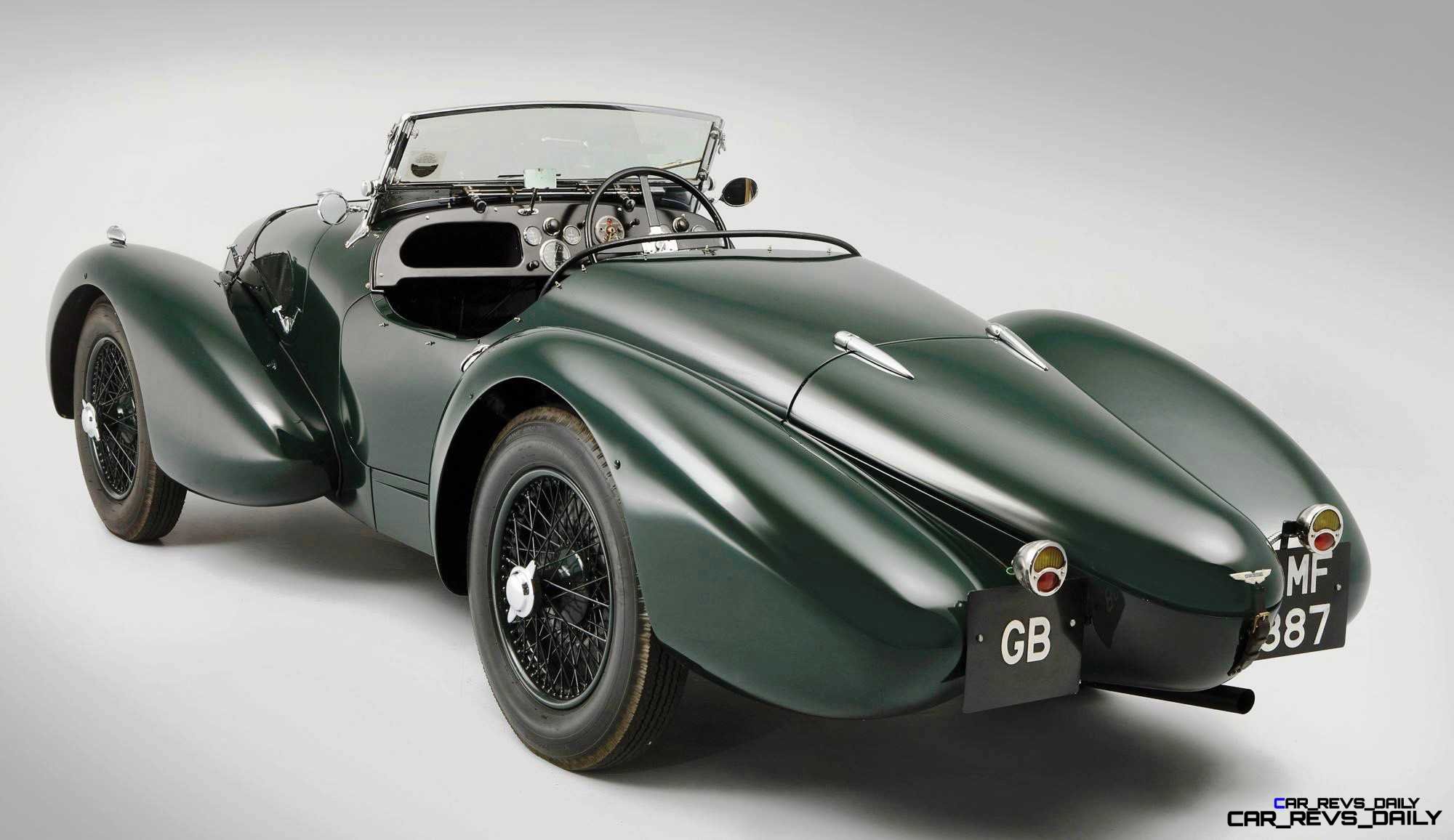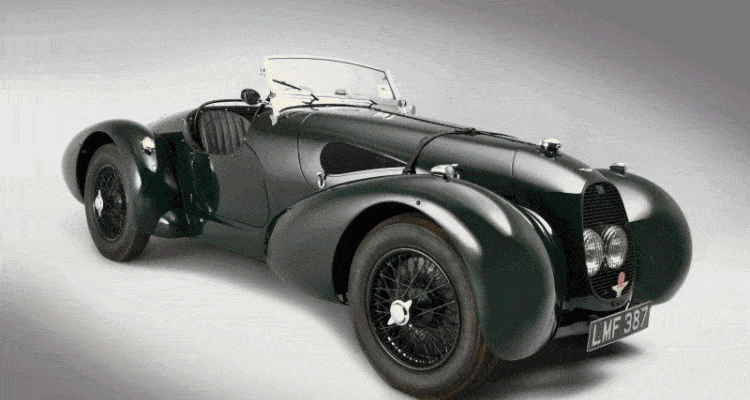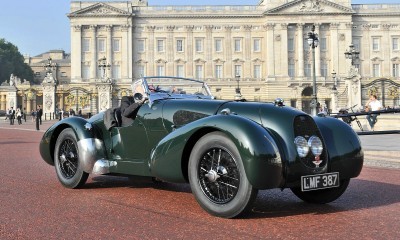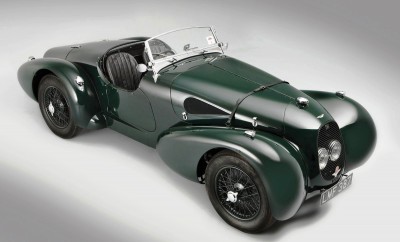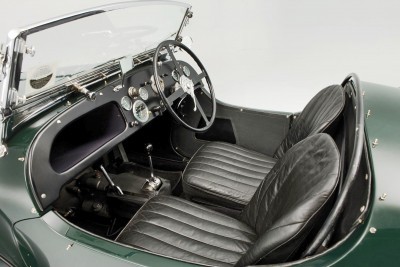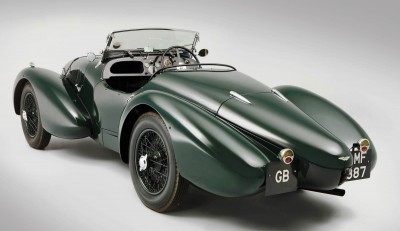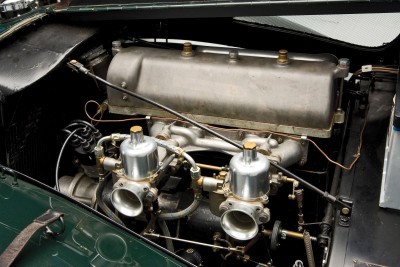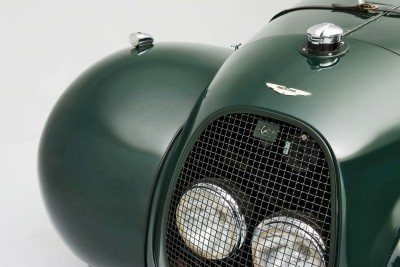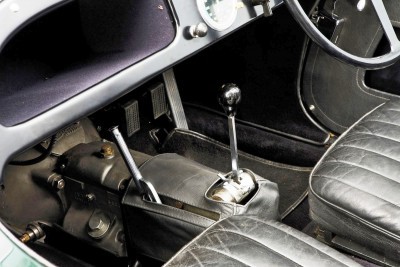 Very special Aston Martin to see on the market! This Speed C streamliner was engineered and built as a LM-ready race prototype. Just eight of this C spec were produced, with this exact car thought to be the last Aston delivered before WWII. Army green paintwork is fitting, then, and quite fetching on the exotic shapes of the speedster fenders and bobtail trunk.
Very special Aston Martin to see on the market! This Speed C streamliner was engineered and built as a LM-ready race prototype. Just eight of this C spec were produced, with this exact car thought to be the last Aston delivered before WWII. Army green paintwork is fitting, then, and quite fetching on the exotic shapes of the speedster fenders and bobtail trunk.
1940 Aston Martin Speed Model Type C
RM Monterey
13-15 August 2015
1940 Aston Martin Speed Model Type C
$750,000 – $950,000
- Chassis no. G40/718/U
- One of 23 full competition specification Speed Models produced
- One of only eight Type C versions
- Believed to be the final Aston Martin delivered during WWII
- International concours participant; extreme originality of components
- Very fast with striking, aerodynamic design
By the mid-1930s, Aston Martin was indeed one of the most admired of British sporting marques, now under the design and technical direction of Augustus “Bert” Bertelli. Undeniably pretty, they were purposeful, solidly engineered, hand-built, quick, and agile.
In early 1936, a new engine, funded by a £10,000 injection of capital by Sir Arthur Sutherland, was being developed by the company’s brilliant young engineer Claude Hill. Two liters in capacity, it was producing about 25 percent more power than the previous 1½-liter engine. This 2-liter was a completely new unit, with larger 1?-inch carburetors and higher lift cams, and was importantly fitted with a dry sump. These Works engines eventually produced 125 brake horsepower, so encouraging in fact that the decision was taken to design a new chassis into which it could be fitted. This was to become the legendary Speed Model, the first two purpose-built in 1936 to uphold the extraordinary successes for Aston Martin at Le Mans in 1934 and 1935.
The new chassis was stronger than that of even its predecessor, the mighty Mark II Le Mans. The wheelbase was one inch shorter than the earlier 1½-liter cars but the track two inches wider. The advanced hydraulic brake system by Lockheed was in effect two separate circuits, front and rear, with built-in redundancy for safety. The cost was enormous, allegedly almost 15 percent that of the whole car. However, it did work superbly well, and few cars with drum brakes, right up to the advent of discs, had better braking than a Speed Model Aston Martin.
In addition to the new engine, an entirely new gearbox was developed. Easily capable of handling 200 brake horsepower and with close ratios and constant mesh gears on the input and main shafts (the ratios of which could easily be changed to lengthen or shorten the intermediate gear ratios), it was one of the finest pieces of engineering to come out of the pre-war Aston Martin factory. While other manufacturers were developing synchromesh gearboxes, Bertelli and Hill understood that all racers needed to do was get into the next gear as quickly as possible. Publicity materials featured the “racing type gearbox, designed for lightning changes up or down,” and one of the joys of driving a good Speed Model remains, to this day, mastering the rewarding gearbox.

Tom Burkart is the founder and managing editor of Car-Revs-Daily.com, an innovative and rapidly-expanding automotive news magazine.
He holds a Journalism JBA degree from the University of Wisconsin – Madison. Tom currently resides in Charleston, South Carolina with his two amazing dogs, Drake and Tank.
Mr. Burkart is available for all questions and concerns by email Tom(at)car-revs-daily.com.

